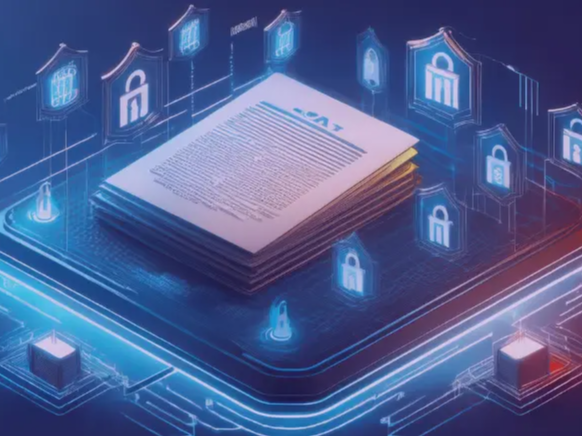Robotic Process Automation (RPA) is a software technology that automates repetitive, rule-based tasks by simulating human interactions with digital systems and software. When combined with Artificial Intelligence (AI), RPA can extend its capabilities to handle cognitive processes such as document understanding, screen visualization, and speech recognition. This integration unlocks numerous new opportunities for global enterprises, as RPA can serve as the "last mile" delivery system for AI, embedding machine intelligence into daily operations.
How Robotic Process Automation Works?
RPA mimics human actions by simulating operations like keyboard inputs and mouse clicks to perform tasks. It operates based on predefined rules and workflows, enabling RPA bots to interact with user interfaces, recognize triggers, and communicate with other systems. These bots can execute tasks across multiple systems and applications, facilitating data exchange and processing. Once rules and processes are set, RPA bots can operate autonomously without human intervention, enabling 24/7 automated office operations. Key functions include launching applications or web pages, receiving and processing data, executing specific tasks, recording results, inputting data into other systems, and closing applications or web pages. The core components of RPA include software bots and a control center. Software bots perform tasks, while the control center monitors, manages, and schedules their operations. Through these mechanisms, RPA automates repetitive, rule-based workflows, enhancing efficiency, reducing errors, and lowering costs.
Key Applications of Robotic Process Automation
Finance: Automated invoice verification and entry, expense reimbursement review, financial report generation, bank reconciliation, and tax filing.
Human Resources: Employee onboarding and offboarding, payroll processing, training management, and performance management.
Supply Chain Management: Purchase order processing, supplier management, inventory management, logistics tracking, and sales order processing.
Customer Service: Customer information entry and updates, complaint handling, satisfaction surveys, follow-ups, and online customer support.
Marketing: Market research data collection, campaign management, social media management, email marketing, and ad placement.
Information Technology: System monitoring and maintenance, data backup and recovery, software installation and upgrades, user permission management, and network configuration.
Challenges Facing Robotic Process Automation
As a cutting-edge technology, RPA demonstrates significant advantages in improving efficiency and reducing costs but also faces several challenges:
Complex Process Handling: While RPA excels at simple, rule-based tasks, it struggles with complex processes requiring extensive judgment and exception handling.
System Integration: RPA bots must integrate with multiple existing systems, potentially encountering compatibility issues and data format mismatches.
Security Risks: RPA bots handling sensitive data may face risks of data breaches and security vulnerabilities if not properly configured and managed.
Change Management: Frequent changes in business processes and systems require RPA bots to adapt promptly; otherwise, automation workflows may fail.
Product Homogenization: Rapid growth in the RPA market has led to increased competition and product similarity among vendors.
Limited Applicability: RPA is best suited for repetitive, rule-based tasks and struggles with tasks requiring complex decision-making.
Customization and Costs: Tailoring RPA solutions to meet diverse business needs increases investment pressure and service costs.
Data Security and Privacy: Ensuring compliance with regulations and security standards is critical as RPA accesses sensitive data and critical systems.
Development Prospects of Robotic Process Automation
The future of RPA appears highly promising. The global RPA market has reached billions of dollars and continues to grow at a double-digit annual rate. By 2026, the market size is expected to exceed $10 billion. RPA technology is already widely used in finance, manufacturing, healthcare, retail, and other sectors, with its applications expected to expand further. Integration with AI, big data analytics, and other advanced technologies will enhance RPA's capabilities, enabling it to handle more complex processes. As RPA adoption deepens, data security and privacy protection will become critical, with technologies like encryption and data masking ensuring user data safety. The RPA industry is shifting toward SaaS models, offering flexibility, scalability, and cost efficiency while enabling continuous updates and maintenance. By integrating AI and machine learning, RPA systems are enhancing data analysis, decision-making, and problem-solving capabilities, broadening their application scope. The industry is also witnessing new opportunities in education and collaboration, fostering talent development, innovation, and enterprise partnerships. In summary, the future of RPA is highly optimistic, with ample opportunities for technological innovation and market expansion.








